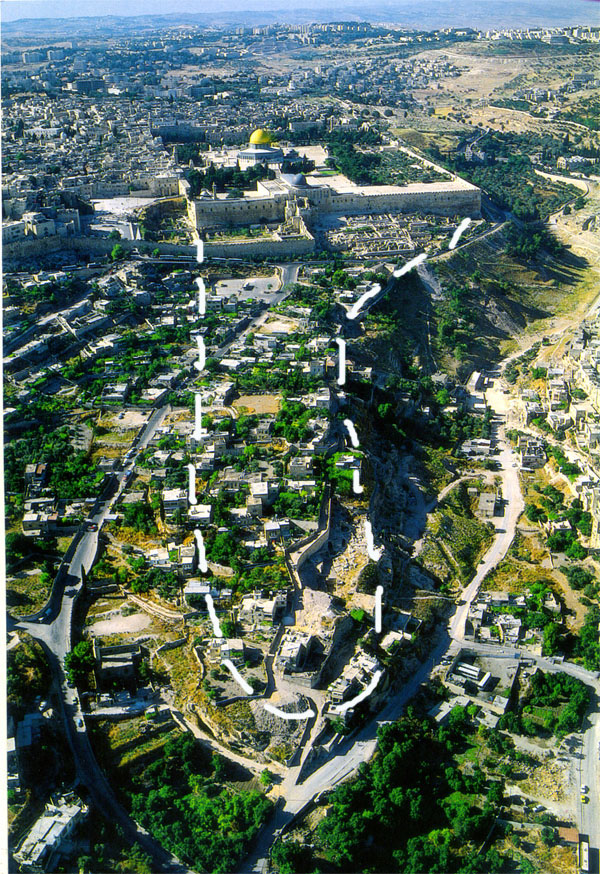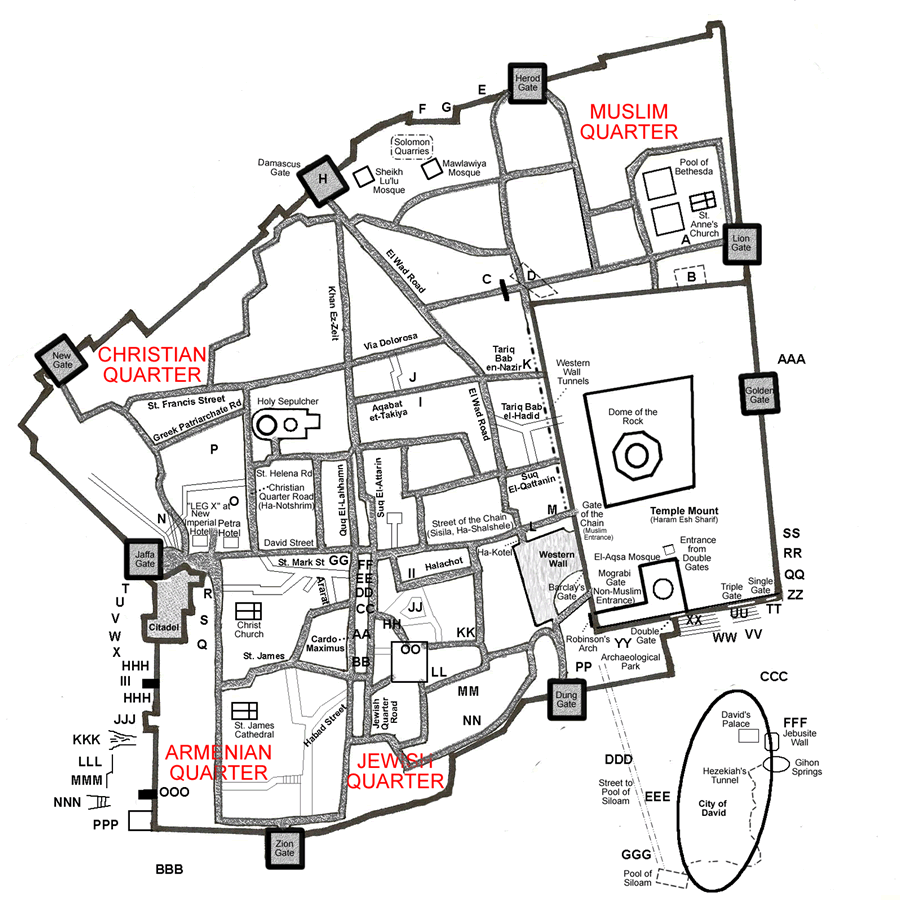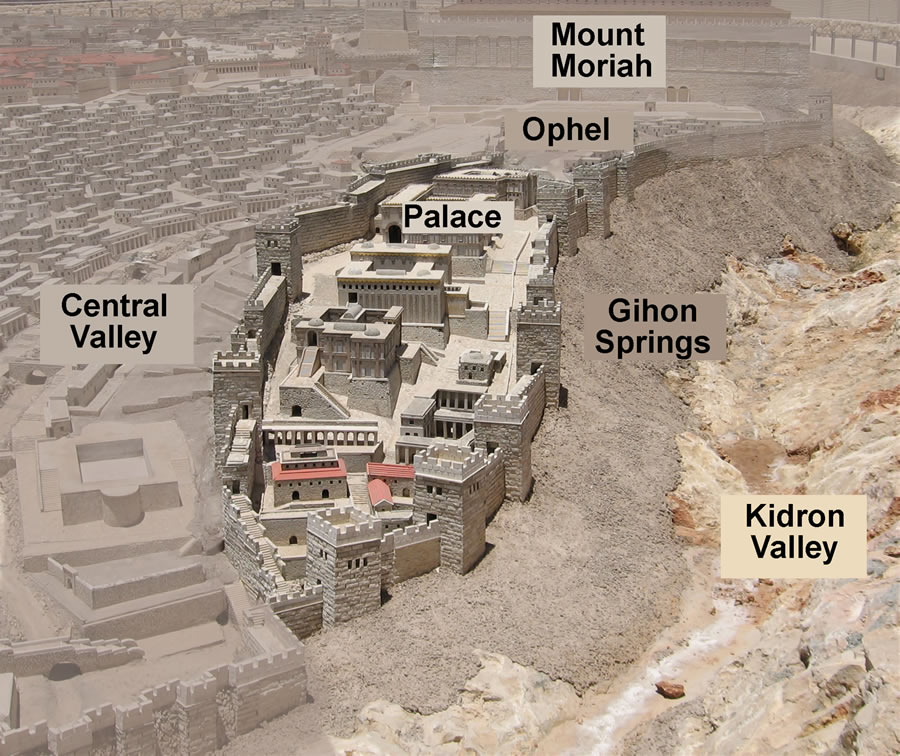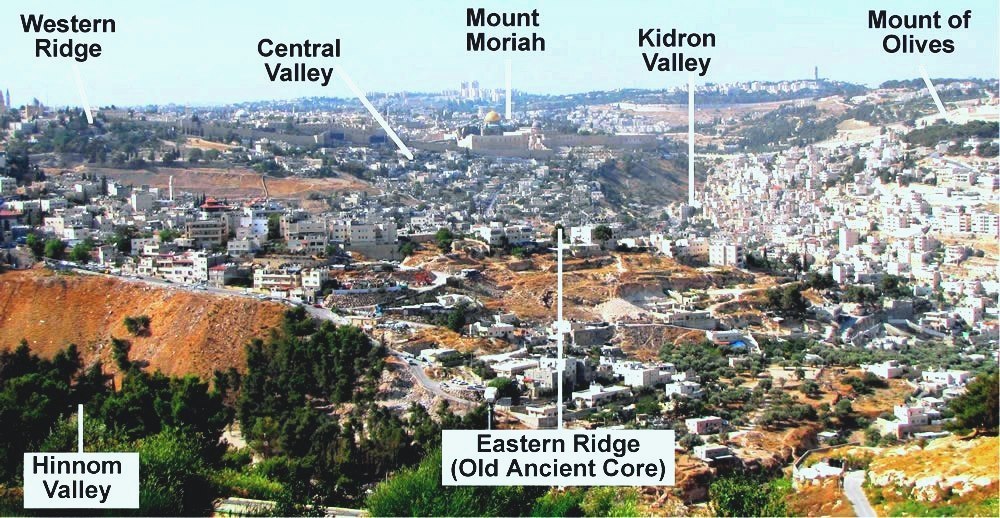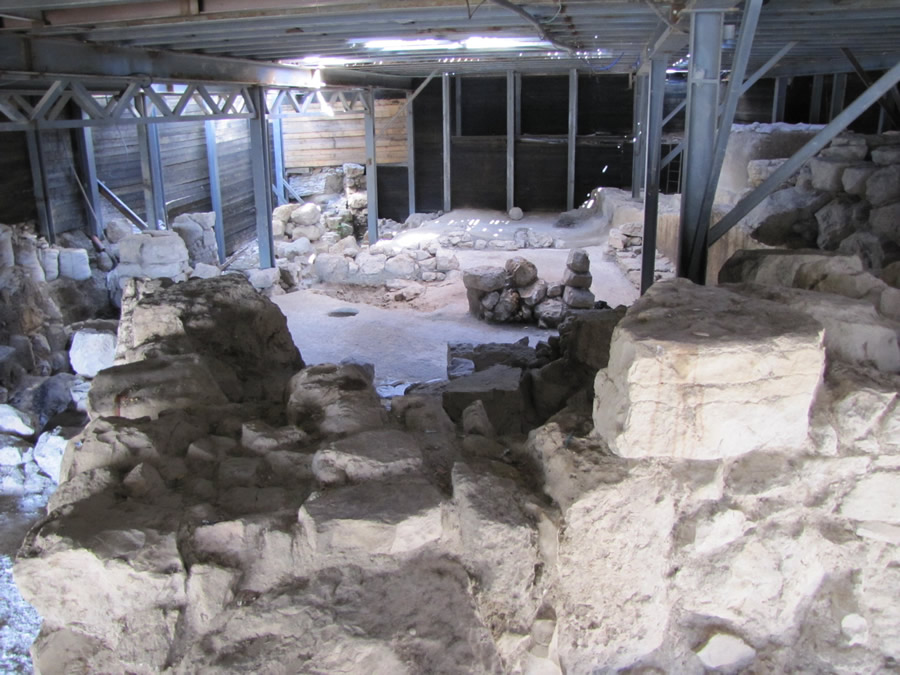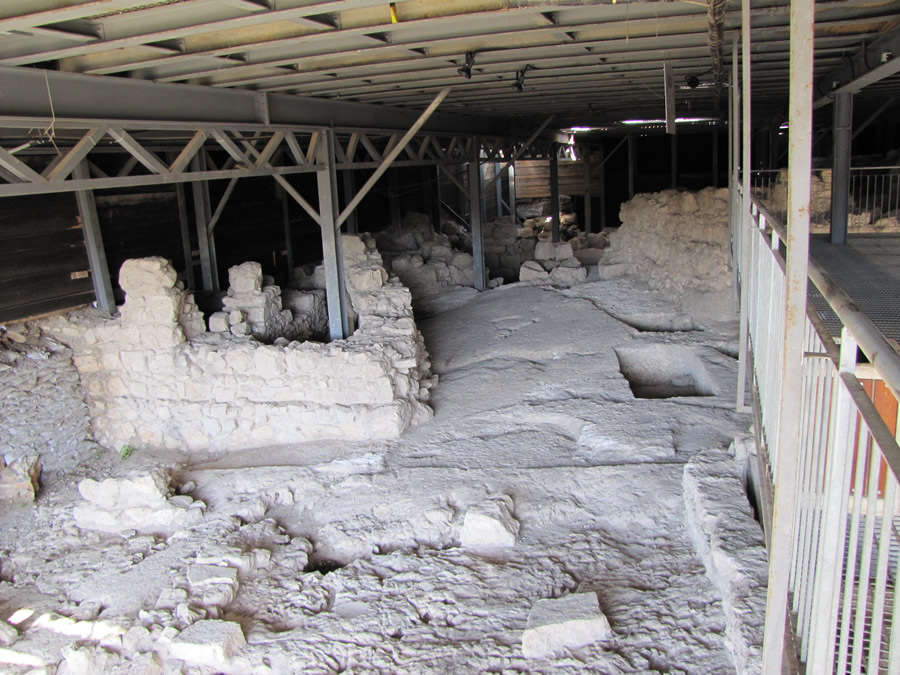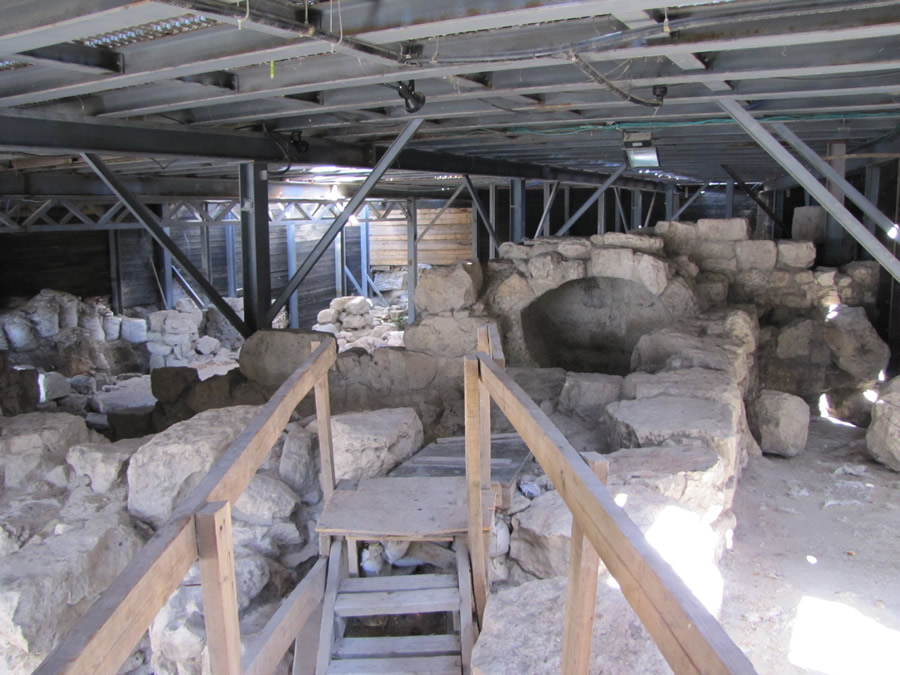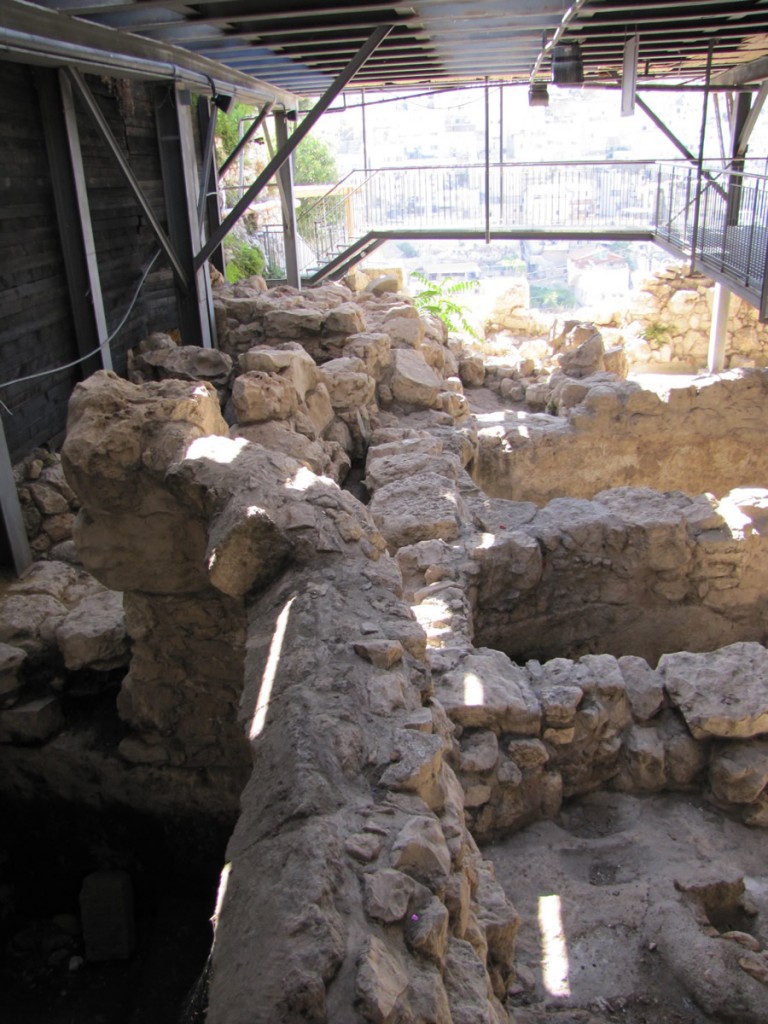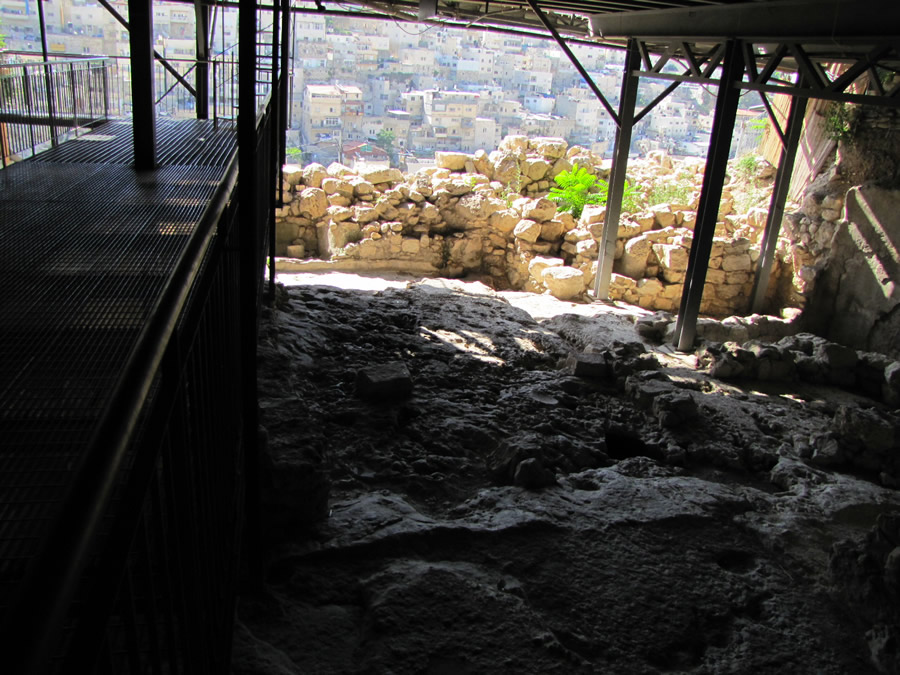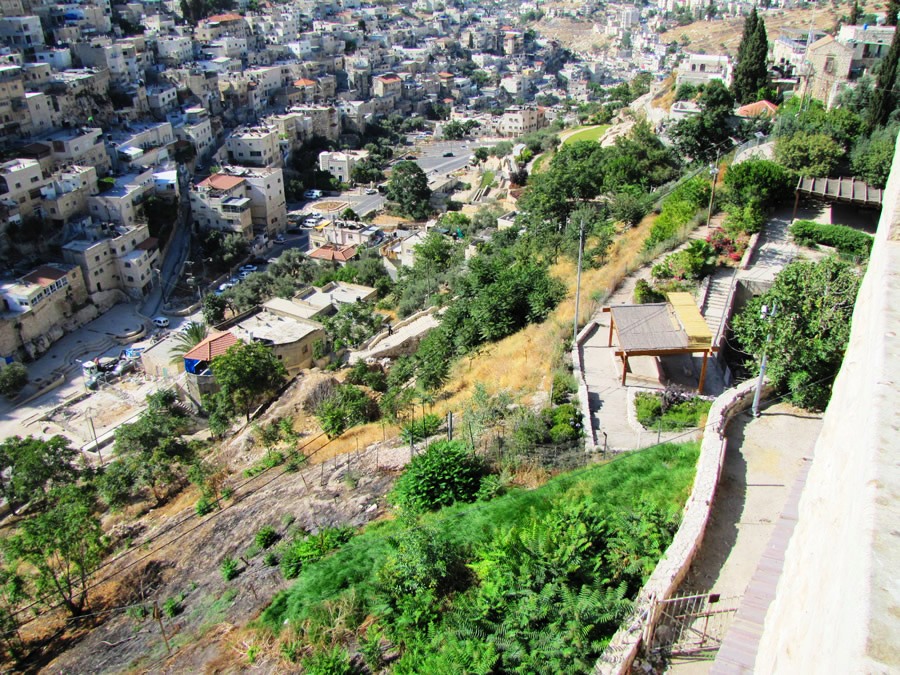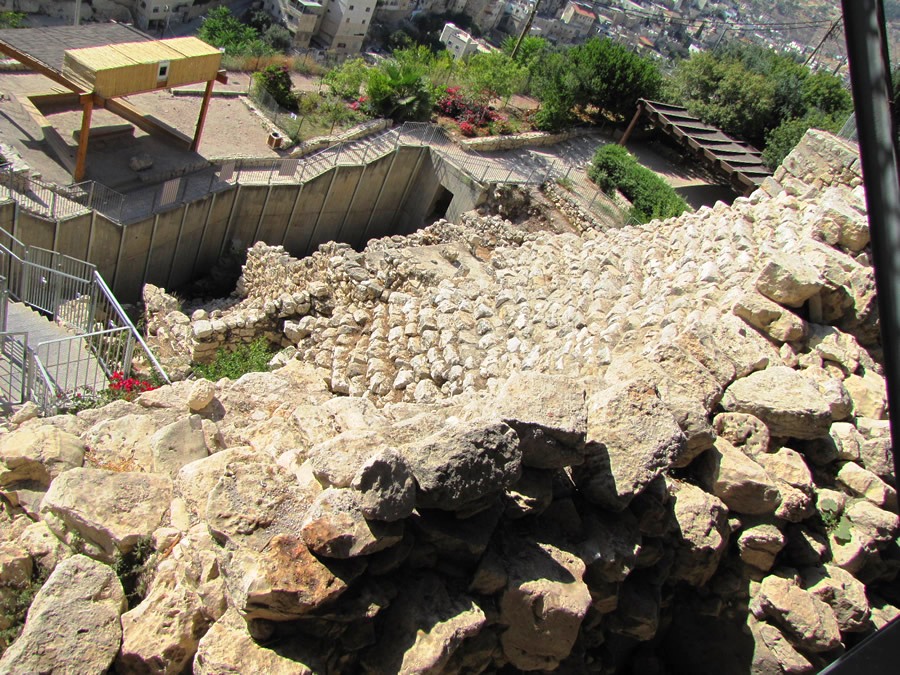City of David
City of David
Ariel view of the modern location of the City of David (Ophel) – Looking from South to North. The white broken-line is where the ancient city of David was located (which is outside the city wall today). The gold domed building is the Muslim shrine called the Dome of the Rock. It is surrounded by ancient retaining wall of the Herodian Temple mount. This picture gives distance perspective. The Kidron valley can be seen on the right side of the photograph.
Jerusalem is mentioned in Egyptian documents as Rushalimum in 1900 BC around the time of Abraham. In the 1300’s Jerusalem is called Urusalim in the el-Armarna letters. In the Assyrian documents of Sennacherib from the 600’s BC it is called Uruslimmu. The Hebrews called it Yerushalem.
The name Jerusalem is a compound word from “yrw” and “slm” which would mean “Foundation of Shalem”. Shalem was one of the “beautiful and gracious gods” of Ugaritic mythology. The ancient word “yrw” appears in Job 38:6 as “cornerstone”, “bases” or “foundation”. The very ancient word “Shalem” is the Canaanite name of this city Jerusalem in Abraham’s day when it says in Genesis 14:18: “Melchizedek king of Salem brought out bread and wine. He was priest of God Most High.” Before David took the city it was occupied by the Jebusites and Jerusalem was called Jebus at that time.
Location Map
The layout of the the modern city of Jerusalem in relation to the ancient city of David.
The City of David
This is a close up view of the northern end of David’s city of Jerusalem. The stepped stone structure supports the palace and fortress that protected the north end of the city. The east was protected by the Kidron Valley. The west was protected by the Central Valley. The south was protected by the joining of the Hinnom Valley with the Central and Kidron Valleys.
Topography of Jerusalem
David’s Jerusalem sat on the Eastern Ridge (Old Ancient Core) south of Mount Moriah with the Kidron on the east and the Central Valley to the west.
David’s Palace
Eilat Mazar has been excavating on the site of King David’s palace since 2005. She has uncovered a large building that sat above the Jebusite wall (the Stepped Stone retaining wall). The Jebusite wall was built between 1200 and 1000 BC, and the large building, known as the Large Stone Structure, was built just after 1000 BC during the reign of David. Mazar identified this Large Stone Structure as the royal “House of Cedar” which was King David’s palace as described in 2 Samuel 5:11:
Now Hiram king of Tyre sent messengers to David, along with cedar logs and carpenters and stonemasons, and they built a palace for David. (2 Sam. 5:11-12)
Inside the Large Stone Structure that sits on top of the Stepped Stone Structure. This Large Stone Structure has been identified as the palace of David. The pottery uncovered here indicates it was not built until the time of David, around 1000 BC.
It is worth noting that David’s palace was new construction in his day. The Jebusites’ former fortress that he had taken was left standing. David moved into that Jebusite fortress after his conquest of Jerusalem and lived there until his palace was built:
David then took up residence in the fortress. (2 Samuel 5:9)
Standing inside David’s palace looking at the excavated walls. (above)
Inside David’s palace, also known as the Large Stone Structure, on the top of the Stepped Stone Structure. (above)
Looking along a wall of David’s palace toward the east. (above)
Underneath the Large Stone Structure are remains most likely left from the events described in Judges 1:8, which were also the subject of some of the Amarna Letters sent to Egypt asking for help.
The men of Judah attacked Jerusalem also and took it. They put the city to the sword and set it on fire. (Judges 1:8)
Looking at the wall at the top of the Stepped Stone Structure from David’s palace. (Above)
Kidron Valley
Looking from David’s Palace into the Kidron Valley. (above)
The Millo
A view from David’s Palace of the Millo (supporting structure), or the Stepped Stone Structure, that supported part of the fortress and David’s Palace known as the Large Stone Structure. (above)
Acknowledgement: Reference.
